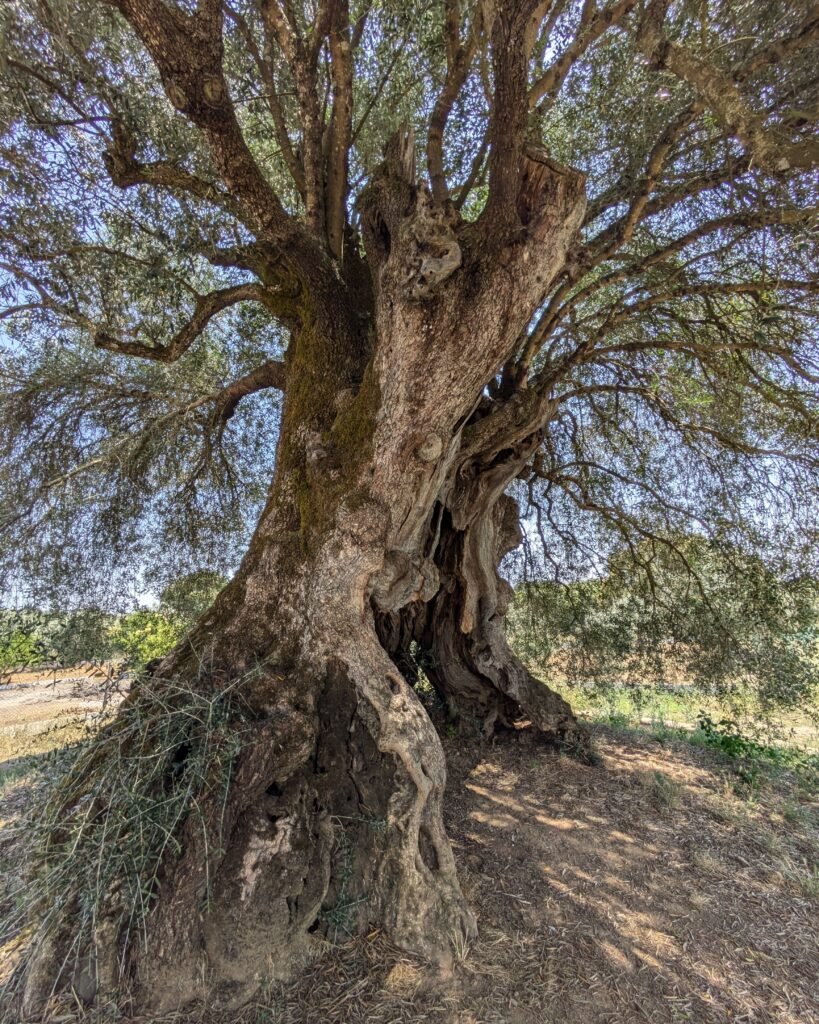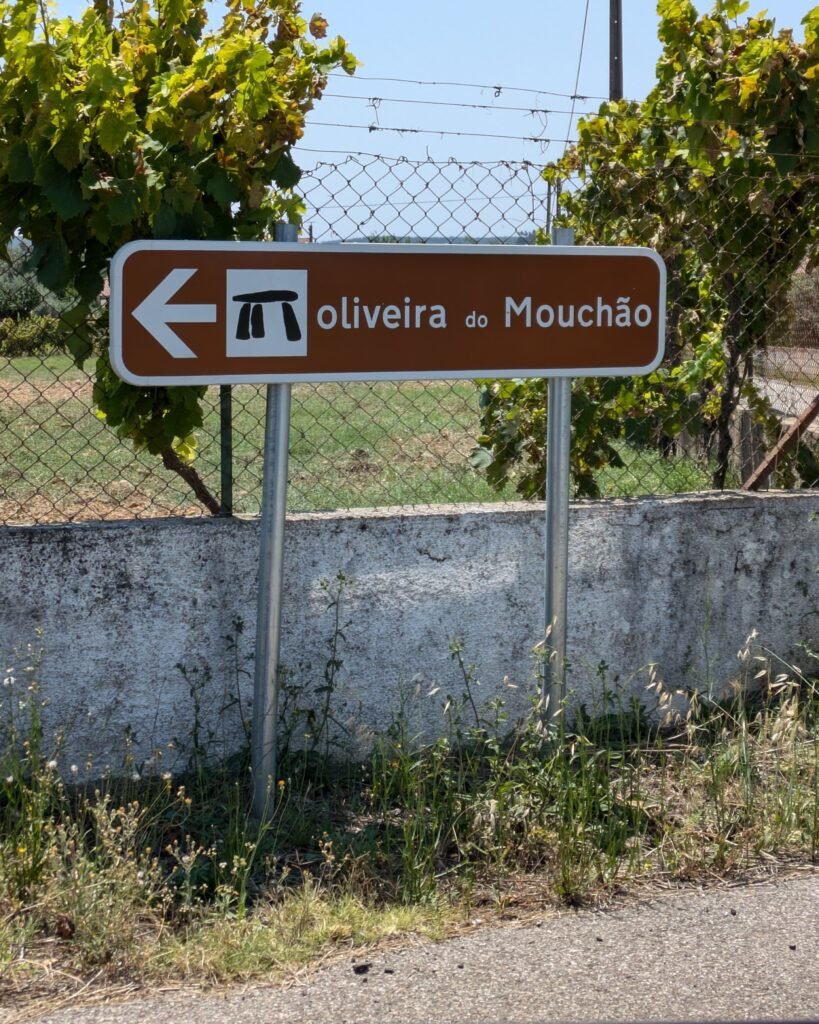In a sleepy corner of a small village just north of the Tejo River, stands an oliveira, or olive tree. It’s massive trunk is hollowed out, and is cut off just over three meters above the ground, allowing fresh young branches to grow. The wind whispers softly through the leaves and whistles slightly as it passes through the tunnel in the tree’s trunk. The tree stands placidly but proudly, benignly observing the visitors who take photographs and feel its trunk and leaves. Their lives are only a tiny fraction of the tree’s own lifespan. It has stood here when their ancient ancestors were alive, and will still stand long after the visitors are gone.






This olive tree (olea europaea) has been standing since the beginning of the Iron Age. It predates written language in Iberia. It had been standing for over a thousand years when the Romans came into the area, and was over two thousand years old when the kingdom of Portugal first came into existence.
The tree still produces olives. At it’s heart, the tree is a Galician type of olive tree, but it has been grafted with a wild olive tree. This technique was introduced to Portugal by the Phonecians. The tree’s name, “Olive Tree of Mouchão,” comes from an old tradition: local fishermen would gather at the tree to start the fishing season. The first to reach the river Tejo would try to take the mouchão (or sand island) fishing lodge, the best spot.
It has been identified as a Tree of Public Interest by ICNF, the Institute for the Conservation of Nature and Forests. It’s been a finalist in annual “Tree of the Year” contests. It has been studied and officially estimated at 3,350 years old. (After the assessment, a stone wall was added around the base of the tree and the space filled with fresh soil, covering some of the tree’s roots which had become exposed.) From the notice plaque at the base of the tree:
It is certified that this Olive Tree, with an average perimeter at breast height of 652cm, an average perimeter of the stump of 1112cm, and a stem height of 320cm, is 3350 years old (margin of error 2%).
This evaluation had as its base a study with data collected in the Alentejo region, carried out by a team of investigators from the Forestry Products Laboratory and the Modelling Unit of the Forestry Department of the University of Trás-os-Montes and Alto Douro (Vila Real – Portugal), according to the methodology described in the Portuguese Patent NP 104183.
June 10, 2016 – Câmara Municipal de Abrantes
Below the tree lies a granite slab with an excerpt from the book, Onde (“Where”), by José Luís Peixote. It says, in part: “A centuries-old tree looks into our faces the way we hold a leaf between our fingers. She feels our gaze, she knows we are here, but she also knows that the earth around her has swallowed millions of leaves like us.”
Location
The tree is located in the Santarém district, in the Abrantes municipality. It’s in the parish of Mouriscos, south of the town of Mouriscos, in the village of Cascalhos.
Access
The tree is reached through small (paved) village roads. There’s a small park around it with parking spaces and picnic tables.
Signage
If you head south from the A23 or the town of Mouriscos, look for the turnoff to the village of Cascalhos. From there, the tree is well signposted!


Links
- Article (in Portuguese) from Wikipedia
- List (in English) of oldest olive trees from Wikipedia
- Article (in Portuguese) from Sapo Viagens
- Article (in Portuguese) from the Municipal site of Abrantes
- Information (in Portuguese) about Trees of Public Interest from ICNF
- Listing (in Portuguese) as finalist in the Tree of the Year contest, 2020
- Radio short (in Portuguese), “Vou Alí e Já Venho,” from RTP1
- Description (in Portuguese) of a visit, by José Louís Peixoto, in his website “Trips to Read”
Nearby
There is a (much older!) dolmen nearby, the Anta de Foz de Rio Frio, about 3.5km away.

Pingback:Anta da Foz do Rio Frio - Prehistoric Portugal